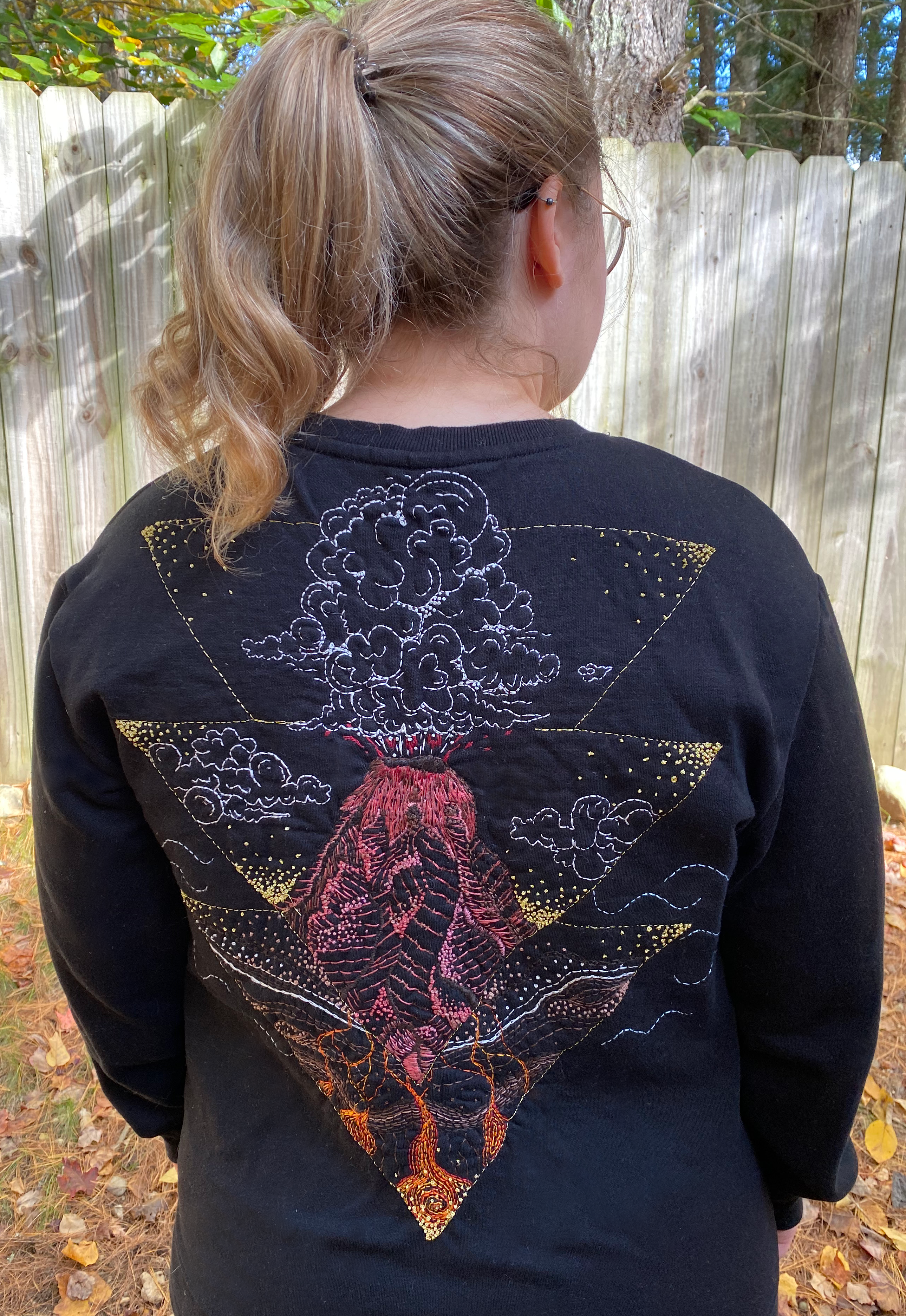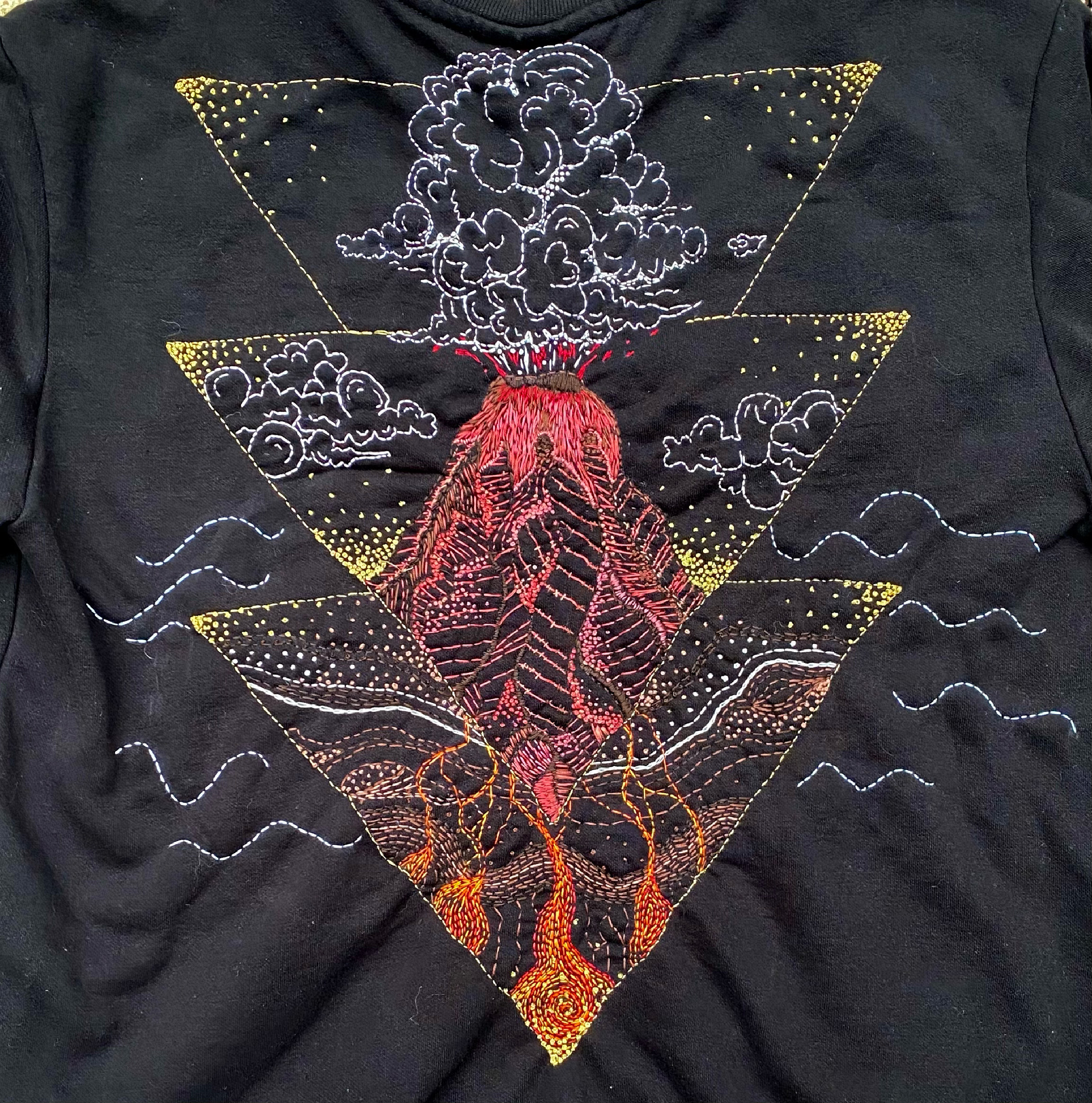10 November 2021
#DrawnToGeoscience: Embroidering volcanos
Posted by Shane Hanlon
#DrawnToGeoscience is a series of posts by artists who draw about science and explain their process and inspiration while also showcasing their pieces. Learn more about contributing. This week, Emma M Burkett.
The journey of my volcano wearable-art began with the inspiration provided by #QuiltYourScience. The idea of sharing my research and passion for all things volcanic through the medium of fabric and thread swirled in my brain for months. While I still look forward to creating a volcanically themed quilt one day, I wanted to capture the voluminous and turbulent eruptive plumes rising above the edifice and the complexity of volcanic plumbing systems forming nested magma webs below the surface of the volcano. For that, I turned to a stockpile of embroidery floss and hoops I inherited from my grandmother and took the leap into this new hobby (#EmbroiderYourScience) to satisfy my little nerd soul. From the beginning, I knew I wanted to share and proudly display my geological passions – even if it may be with folks in the grocery store line. So instead of choosing to embroider on a single piece of fabric, I decided to embroider a cozy sweater so that I may flaunt my eye-catching research wherever I may go.
As any volcanologist will tell you, all volcanoes are works of art, inherently breathtaking landmarks rising from the Earth’s surface. Therefore, designing the volcanic edifice would be the easy part for my work of art, but I wanted to reflect all aspects of my research – from using remote sensing to study eruption plumes to geochemistry in the pursuit of understanding magma dynamics. I also wanted to bust the myth of the “straw and balloon” volcanic system that most folks probably picture when imagining the depths of a volcano. My current findings support a series of magma highways connecting a complex system of small pods like cities, emplaced throughout the upper crust, as well as storing slugs of crystal-rich magma like a congested interstate in rush hour traffic. So even if it doesn’t spark a conversation at the farmer’s market, I at least know when I’m roaming around or running errands, someone is going to experience what a real volcano might look like. I hope you enjoy it too!
–Emma M Burkett is a PhD student in Natural Resources & Earth Systems Science (NRESS) at the University of New Hampshire. Find her on Twitter and via email.





 The Plainspoken Scientist is the science communication blog of AGU’s Sharing Science program. With this blog, we wish to showcase creative and effective science communication via multiple mediums and modes.
The Plainspoken Scientist is the science communication blog of AGU’s Sharing Science program. With this blog, we wish to showcase creative and effective science communication via multiple mediums and modes.